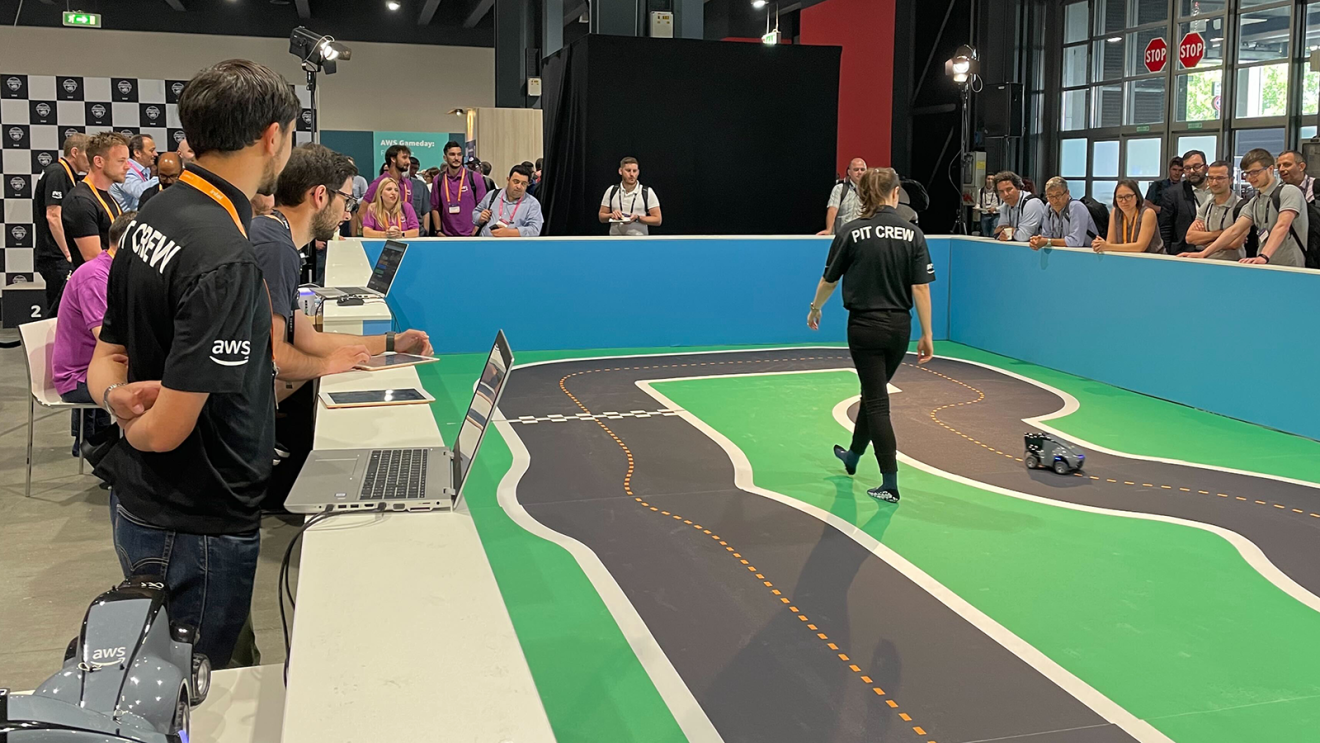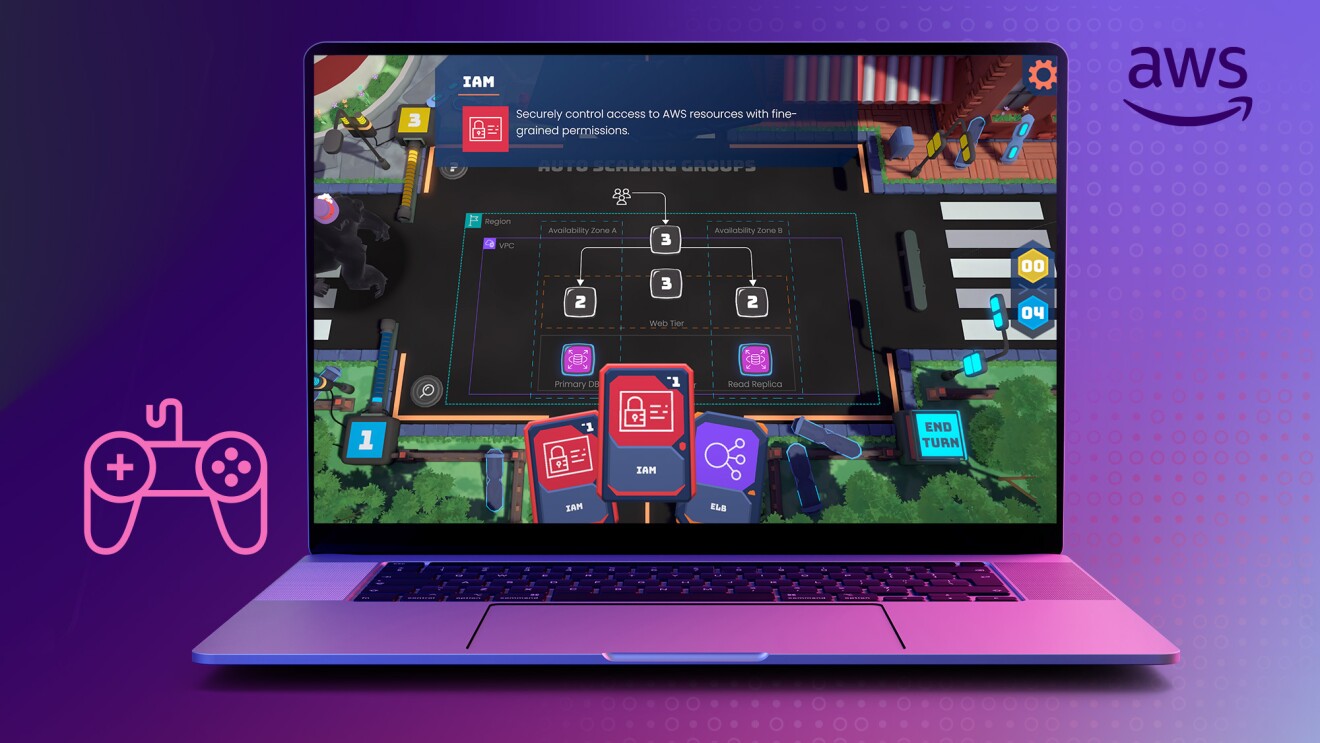Artificial intelligence (AI) is the most transformative technology of our generation. If we are going to unlock the full potential of AI to tackle the world’s most challenging problems, we need to make AI education accessible to anyone with a desire to learn.

That’s why Amazon is announcing “AI Ready,” a new commitment designed to provide free AI skills training to 2 million people globally by 2025. To achieve this goal, we’re launching new initiatives for adults and young learners, and scaling our existing free AI training programs—removing cost as a barrier to accessing these critical skills.
The three new initiatives are:
- Eight new and free AI and generative AI courses
- Amazon Web Services (AWS) Generative AI Scholarship, providing more than 50,000 high school and university students globally with access to a new generative AI course on Udacity
- New collaboration with Code.org designed to help students learn about generative AI
The need for an AI-savvy workforce has never been greater. A new study by AWS and research firm Access Partnership found the following:
- Hiring AI-skilled talent is a priority for 73% of employers—but among these, three out of four say they are unable to meet their AI talent needs.
- Employers expect their workers to earn up to 47% more in salaries if they upskill in AI.
- AI will become more integral to the way business is done, with 93% of businesses expecting they will be using AI solutions across their organizations in the next five years.
Amazon is launching AI Ready to help those with a desire to learn about AI and benefit from the tremendous opportunity ahead. The following initiatives are designed to open opportunities to those in the workforce today as well as the future generation.
Free generative AI training for in-demand jobs

To support professionals in the workplace, we’re announcing eight new, free AI and generative AI courses open to anyone and aligned to in-demand jobs. There is something for everyone with courses ranging from foundational to advanced and for business leaders as well as technologists. These courses augment the 80+ free and low-cost AI and generative AI courses and resources provided through AWS.
Courses for business and nontechnical audiences
- Introduction to Generative Artificial Intelligence provides an introduction to generative AI, its applications, and need-to-know concepts, like foundation models. Find it on AWS Educate.
- Generative AI Learning Plan for Decision Makers is a three-course series covering how to plan a generative AI project and build a generative AI–ready organization. Find it on AWS Skill Builder.
- Introduction to Amazon CodeWhisperer teaches participants how to use Amazon’s AI code generator, which produces whole lines of code. Find it on AWS Educate.
Courses for developer and technical audiences
- Foundations of Prompt Engineering introduces the basics of prompt engineering, the practice of designing inputs for generative AI tools, all the way through to advanced prompt techniques. Find it on AWS Skill Builder.
- Low-Code Machine Learning on AWS explores how to prepare data, train machine learning models, and deploy machine learning models, with minimal coding and without deep knowledge of machine learning. Find it on AWS Skill Builder.
- Building Language Models on AWS covers how to use Amazon SageMaker distributed training libraries to build language models and how to fine-tune open source models and foundation models. Find it on AWS Skill Builder.
- Amazon Transcribe—Getting Started explores how to use Amazon Transcribe, a fully managed AI service that converts speech to text using automatic speech recognition technology. Find it on AWS Skill Builder.
- Building Generative AI Applications Using Amazon Bedrock teaches how to use Amazon Bedrock to build generative AI applications. Find it on AWS Skill Builder.
$12 million in generative AI scholarships
Through the AWS Generative AI Scholarship, AWS will provide Udacity scholarships, valued at more than $12 million, to more than 50,000 high school and university students from underserved and underrepresented communities globally.
We want to help as many students as possible. Eligible students can take the new Udacity course Introducing Generative AI with AWS for free. The course, which was designed by AI experts at AWS, introduces students to foundational generative AI concepts and guides them through a hands-on project. Upon successful course completion, students earn a certificate from Udacity to showcase their knowledge to future employers.
Accessible and fun introduction to generative AI with new Hour of Code Dance Party: AI Edition
Amazon is kicking off a new collaboration between Amazon Future Engineer and Code.org to launch Hour of Code Dance Party: AI Edition. During this hour-long introduction to coding and AI, students will create their own virtual music video set to hit songs from artists including Miley Cyrus, Harry Styles, and more.

Students will code their virtual dancer’s choreography and use emojis as AI prompts to generate animated backgrounds. The activity will give participants an introduction to generative AI, including learning about large language models and how they are used to power the predictive analytics responsible for creating new images, text, and more.
Hour of Code will take place globally during Computer Science Education Week, December 4–10, engaging students and teachers in kindergarten through 12th grade. Additionally, AWS is providing up to $8 million in AWS Cloud computing credits to Code.org, which runs on AWS, to further support Hour of Code.
Cloud skills training investment
Amazon’s new AI Ready commitment is in addition to AWS’s commitment to invest hundreds of millions of dollars to provide free cloud computing skills training to 29 million people by 2025, which has already trained more than 21 million people.
Trending news and stories
- Amazon unveils 7 new robots powering faster, safer deliveries: Go inside our most innovative delivery station yet
- Introducing Vulcan: Amazon's first robot with a sense of touch
- This new AI tech will make sorting packages easier for Amazon's delivery station employees
- How Amazon helps data center communities thrive











